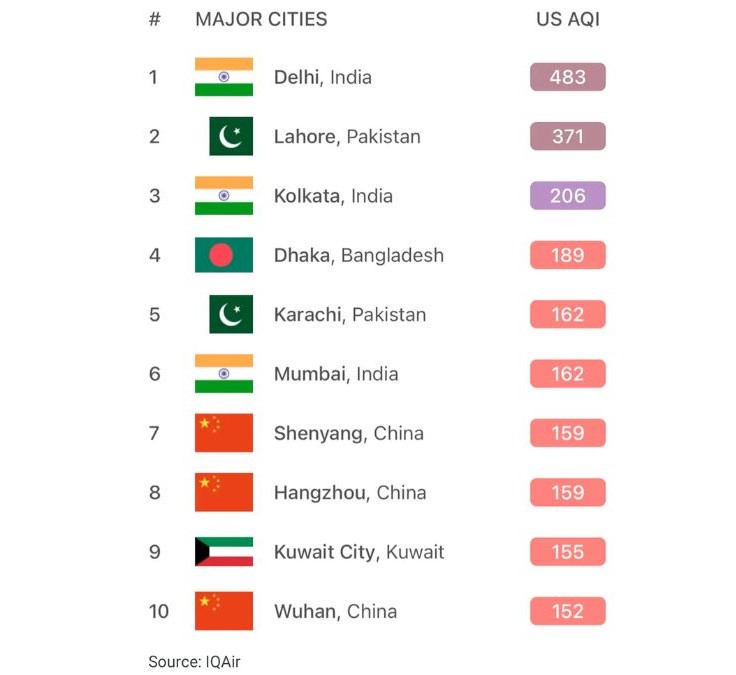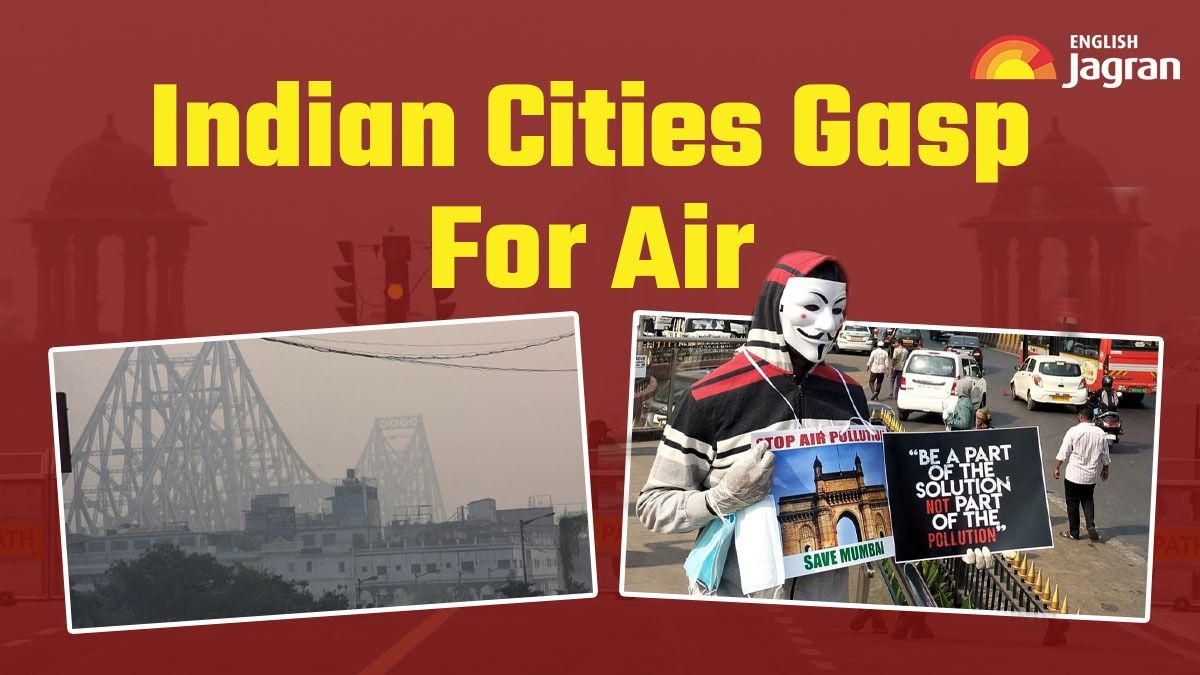- By Vivek Raj
- Sun, 05 Nov 2023 07:23 PM (IST)
- Source:JND
Air pollution and the Air Quality Index (AQI) have become increasingly prevalent topics of concern, with New Delhi, the capital of India, experiencing a persistent and hazardous layer of toxic haze. The deteriorating air quality is posing a significant challenge for the residents of Delhi, making each day a struggle for people without clean and breathable air. This issue is not limited to Delhi alone, as air pollution and declining air quality have emerged as severe problems affecting regions worldwide.
According to data from the Swiss Group IQAir, on Sunday, New Delhi, Mumbai, and Kolkata found themselves ranked among the world's top 10 most polluted cities. With an Air Quality Index (AQI) of 483, New Delhi remained the most severely affected city globally, followed by Lahore in Pakistan in second place and Kolkata in third.
New Delhi: The Most Polluted City In The World
The residents of Delhi and its adjacent areas are grappling with the challenge of breathing in the face of severely poor air quality. The capital city, often described as a "gas chamber", witnesses the presence of a thick and noxious smog from early morning.
The air quality in Delhi is on a continuous decline, now falling into the 'severe' category and even 'severe plus' in certain locations. According to data provided by the Swiss group IQAir, as of 7 am today, Delhi recorded an AQI of 483.
A significant number of the city's 20 million inhabitants have reported discomfort, experiencing eye irritation and scratchy throats as the air has taken on a dense grey appearance. In some monitoring stations, the AQI has risen to over 550.
To address this critical situation, GRAP stage III has been implemented, and a crisis plan is already in action in the national capital. The measures include suspending construction activities, promoting the use of public transportation, and encouraging remote work when feasible. Primary schools have also been shut in the capital and have been advised to operate online.
With India hosting the Cricket World Cup, fireworks have been banned at matches in Mumbai and Delhi to mitigate further exacerbation of hazardous air pollution levels.
Top 10 Most Polluted Cities Globally

According to the Swiss Group IQAir's air pollution data, the top ten most polluted cities worldwide are New Delhi, Lahore, Kolkata, Dhaka, Shenyang, Mumbai, Karachi, Baghdad, Kuwait, and Dubai. Notably, India's three cities feature prominently among the most polluted cities.
Understanding the Air Quality Index (AQI)
The Air Quality Index (AQI) is a comprehensive measure of overall air quality. It is calculated based on the concentrations of five key air pollutants: ground-level ozone, particulate matter (PM2.5 and PM10), carbon monoxide, nitrogen dioxide, and sulphur dioxide.
The AQI is reported on a scale from 0 to 500, with higher values signifying worse air quality. It is categorized as follows: good (0-50), satisfactory (51-100), moderate (101-200), poor (201-300), very poor (301-400), and severe (401-500). An AQI exceeding 500 is labeled "severe plus."
The AQI serves to inform the public about current air quality conditions and helps individuals make informed decisions about outdoor activities.
How Poor AQI Can Impact Health
Particularly alarming is the concentration of fine particulate matter in Delhi, PM2.5, which stood at 523 mg per cubic meter, exceeding World Health Organisation guidelines by 104.6 times. Long-term exposure to PM2.5, these fine particles that can penetrate the bloodstream through the lungs, has been associated with chronic heart and respiratory conditions.
Air pollution, especially PM2.5, has been recognised by the World Health Organisation as a leading cause of cancer. Additionally, air pollution has been linked to a range of health issues such as type 2 diabetes, obesity, systemic inflammation, Alzheimer's disease, and dementia.
Children and adolescents are especially vulnerable to the health effects of air pollution, given their ongoing physical development. Exposure to air pollution during childhood increases the risk of diseases in later life, with implications for lifelong health.

